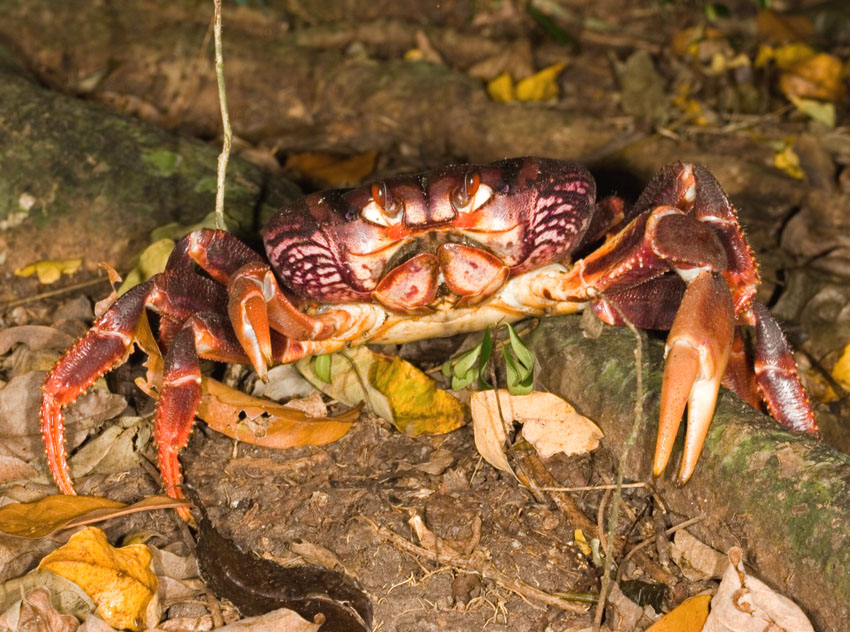[The] typical bromeliad has, as a pineapple does, a central cone of leaves that collects rain water. At the base of the cone, other leaves open outward; the leaf stems are deep, and rain collects there, too, giving each plant cascading tiers of pools. The biggest bromeliads hold as much as two liters (just over two quarts) of water. …
The female [Metopaulias depressus, a reddish-brown crab from the bromeliads of Jamaica with a shell just 2 centimeters (three quarters of an inch) across] lavishes attention on her young. She chooses her plant carefully — she prefers plants with larger volumes of water — and then prepares the pool that will be the nursery. She fishes out any dead leaves that may have fallen in, and drops them onto the ground. (If a sneaky experimenter puts leaves back in, she’ll remove them.) And she drops empty snail shells into the water, often after capturing and feasting on the owners.
These behaviors have two effects. Removing the leaves increases the amount of oxygen in the water; crab larvae need high levels of oxygen in order to breathe. The added snail shells increase the levels of calcium, a mineral without which baby crabs can’t make shells of their own. Unimproved pools can’t sustain baby crabs.
Wednesday, March 19, 2008
Intelligent crabs that live in bromeliad pools
From Olivia Judson — New York Times Blog
Subscribe to:
Post Comments (Atom)

No comments:
Post a Comment